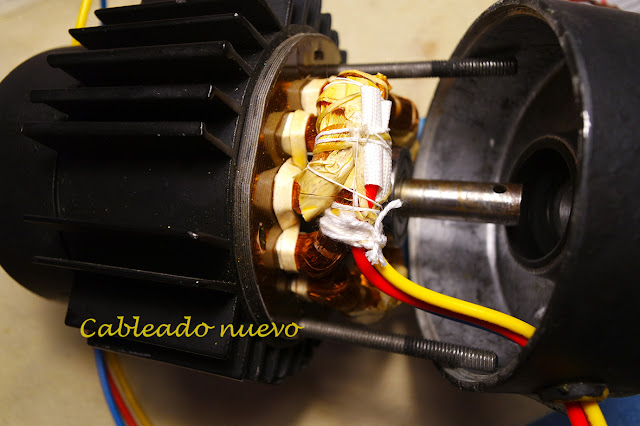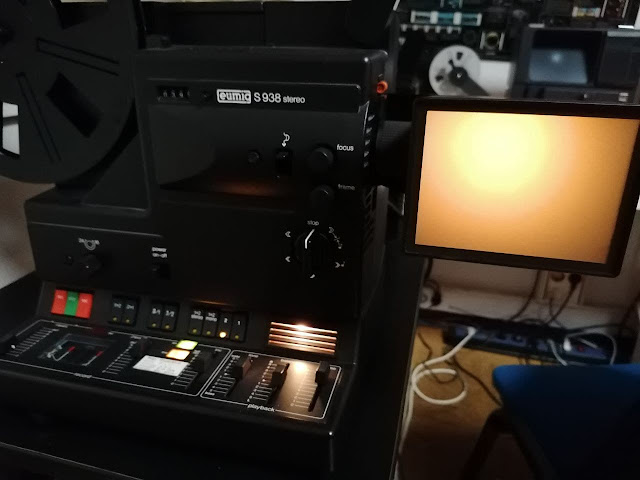Archiving colour motion pictures films, one of the main troubles, besides V.S., for all non LPP or Technicolor prints, is the colour fade. This serious trouble, for film archivist and collectors, is now solved, thanks a chemical process developed in Italy by a very well know film technician.
The O.R.S. system is described in depth in SilverGrain Classics, the only one magazine fully devoted in English at photochemical technology and art, published in Germany in English. The issue can be obtained from the publisher by air mail. Here, on the blog, we explain a brief summary.
The O.R.S. substractive system is a procedure that uses a substractive chemical treatment, which is very different from coloring the film.
In the O.R.S. substractive system the red dominant is removed. So, the systems is better advisable to apply to film stocks which, under the red (Kodak) or brown (Fuji) dominant, still retain some other colours. if they are there, then they will come out again. What is there or what is not is not changed or altered.
I have checked it with 3 faded prints and, yes, the ORS Substractive System works pretty well. Of course, the print never will be as it was new but it will be projectable and enjoyable again.
The O.R.S. Substractive System give us, the film collectors and film archivists, the ocasion to return to life some of our beloved faded prints.
ORS: IS NOT A MIRACLE.
The ORS Substractive System is not a miraculous system that returns colours that it no longer has, but manages to remove the red dominant present in the print itself. Fading is like a kind of oxidation, so this procedure is divided into two phases:
1) In phase one, it removes the fading, with the red being subtracted in a chemical process!!!
2) in phase two, adjusts the contrast as much as possible.
If under the red or brown dominant there was no longer any color, then, the result would be very similar to the monochrome. O.R.S. substractive system subtract what disturbs the vision of the film (the red dominant, which is a kind of "oxidation" that is removed), which, it's definitely surprising in positive. I have tested the two phases of the ORS substractive system with 3 ex airline prints, all Eastman SP polyester film, fully faded, and I´m now very happy: nobody. except some crazy collector friend of mine, was looking to watch this faded prints, but now my family can enjoy them again! The O.R,S. substractive system is able to remove the fading that is very similar to an oxide, from the film, so we can see again the colours that are still under the red cast (fading).
The ORS Substractive System certainly almost completely eliminated the red dominant and contrast is now high.
In the second phase of the treatment it is also possible to act in correction on the contrast. This is how, as can be understood, one does not invent what is not there, and does not alter what is there.
With regards to the duration of the treatment: aging tests have been carried out and have given excellent results also from this point of view, for some years there should be no further alteration.
ADDENDUM: It does not go in any way to remove a color or a dye, but, in an absolutely subtractive way, to remove the kind of oxide that the base color, the cyano, due to a wrong chemical process in its time, erroneously has profit causing the dominant red. Furthermore, in the second phase of the treatment, the contrast is rebalanced, completing the treatment as if it were a new print. This makes it possible to appreciate all the colours that are still present and to interrupt that sort of oxidation which, in fact, would continue to cause the other colours to deteriorate, dragging the film definitively towards red monochrome. The worst thing is to do nothing by witnessing the irreversible deterioration of your movie. If you really like your movies, this is the best thing to be able to enjoy again and keep them for many years.
IF YOU WANT TO KNOW SOMETHING MORE...
The Italiab lab, after years and years of experience in the printing of movies, has developed a machine that removes the excess oxide millimetrically caused by cyano. After that ... the colours below are all there where they were: nothing gets altered.
If there are no colors present below, then we will have a sort of monochromatism.
Some stocks (Kodak SP or last generation of Easrman for example and many Fuji too), the colours below are all right ... so, the nice thing is that we will come back to appreciate them again.
In the second phase of the treatment, the contrast is rebalanced also giving strength to the blacks. It is important to know that there are precise times for treating the film ... and that the machine designed in the Italian lab succeeds perfectly in all this micrometrically.
 |
| Article published in the international magazine SilverGrain Classics (formerly Photoklassik International) |
YEARS OF EXPERIMENTATION.
Regarding the imbibing of cyano, it was taken into consideration by the lab at the beginning of the experiments, but immediately rejected by him because it removes contrast, so the proceeded with the current system.
PRICE
The treatment is not expensive. For 16 mm and Super8 prices are only 50 € of reels up 480 meters; or 60 € for reels betwenn 480 meters to 750 meters. Ask to Alberto for 35 mm prices.
ADDRESS.
The exclusive collect address, the only one authorized for the lab, is Movie Magnetic, the Italian firm that is the only one in the World adding paste striping to 16 mm and S8 prints (triacetate or polyester).
Movie Magnetic is owned by Alberto Vangelisti, with a large background in the movie industry. His personal email is: moviemagnetic@gmail.com
And the postal address is:
MOVIE MAGNETIC
Via Don Miliani, 42.
52028 Terranuova
Italia


































